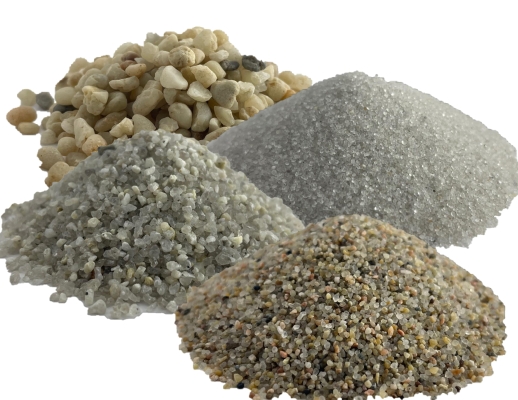 Sandblasting is a popular technique used to clean, strip, and shape various surfaces by propelling abrasive media at high speeds. The effectiveness of sandblasting depends significantly on the choice of blasting media, which can impact both the finish quality and the overall cost of the process. With numerous options available in the market, selecting the right sandblasting media can be a daunting task. This comprehensive guide aims to assist you in making informed decisions when purchasing sandblasting media in 2024.
Sandblasting is a popular technique used to clean, strip, and shape various surfaces by propelling abrasive media at high speeds. The effectiveness of sandblasting depends significantly on the choice of blasting media, which can impact both the finish quality and the overall cost of the process. With numerous options available in the market, selecting the right sandblasting media can be a daunting task. This comprehensive guide aims to assist you in making informed decisions when purchasing sandblasting media in 2024.
Understanding the Basics of Sandblasting Media
Before diving into the specific types of sandblasting media, it’s essential to understand the basic factors that influence their effectiveness. The most critical factors to consider when selecting sandblasting media are:
- Hardness: The harder the media, the more aggressive and faster the cleaning process. However, harder media may also increase the risk of damaging the substrate.
- Size and shape: The size and shape of the particles determine the finish quality, with larger and more irregular particles providing a rougher surface.
- Reusability: Some media types can be reused multiple times, making them more cost-effective in the long run.
- Environmental impact: It’s crucial to consider the environmental implications of the media, such as dust production and disposal requirements.
Common Types of Sandblasting Media
Now that you have a basic understanding of the factors influencing sandblasting media performance let’s explore the most common types available in the market:
Glass Beads
Glass beads are a popular choice for achieving a smooth and bright finish on various surfaces. They are gentle enough for use on delicate materials like aluminum and stainless steel, making them ideal for automotive and aerospace applications. Glass beads are also reusable and environmentally friendly.
Aluminum Oxide
Aluminum oxide is a hard and sharp synthetic media, ideal for aggressive cleaning, deburring, and surface preparation. It is commonly used for etching glass and removing rust, paint, or scale from steel surfaces. Aluminum oxide is also highly reusable, contributing to its cost-effectiveness.
Silicon Carbide
Silicon carbide is the hardest sandblasting media available, making it suitable for aggressive and rapid material removal. This media is ideal for applications such as stone engraving, cleaning engine parts, and removing heavy rust and paint. Due to its high cost, silicon carbide is generally reserved for specialized applications.
Crushed Glass
Crushed glass is an eco-friendly abrasive media, made from recycled glass bottles. It offers a good balance between aggressiveness and gentleness, making it suitable for a wide range of applications, including removing rust, paint, and graffiti. Crushed glass is a single-use media, which may increase the overall cost of sandblasting.
Choosing the Right Sandblasting Media
To select the most suitable sandblasting media for your application, consider the following factors:
- Surface material: Choose a media that is compatible with the substrate to prevent damage. For example, glass beads are suitable for delicate surfaces, while steel grit is ideal for heavy-duty tasks.
- Desired finish: Determine the level of smoothness or roughness you wish to achieve and select a media that meets your requirements. For instance, glass beads produce a smooth finish, while silicon carbide offers a more aggressive, rough texture.
- Cost: Consider both the initial purchase price and the long-term costs associated with the media. Reusable media, such as aluminum oxide or steel grit, may be more cost-effective in the long run despite their higher upfront cost.
- Environmental impact: Opt for environmentally friendly media, such as crushed glass or glass beads, when possible to minimize the ecological footprint of your sandblasting activities.
- Availability: Ensure that the chosen media is readily available from your supplier, as this can impact the efficiency and timeline of your projects.
When buying sandblasting media, keep these tips in mind:
- Buy from a reputable supplier: Choose a supplier with a proven track record of providing high-quality sandblasting media and equipment. This will ensure that you receive reliable products and excellent customer support.
- Bulk purchasing: If you have large or ongoing sandblasting projects, consider buying media in bulk to save money and reduce the frequency of reordering.
- Ask for samples: Request samples of different media types from your supplier to test their effectiveness on your specific application before making a significant investment.
- Stay updated: Stay informed about the latest trends and advancements in sandblasting media and equipment. This will help you make better decisions and improve the efficiency of your sandblasting operations.
Choosing the right sandblasting media is crucial for achieving optimal results and minimizing costs. By considering factors such as surface material, desired finish, cost, environmental impact, and availability, you can select the best media for your specific needs. Don’t forget to purchase from a reputable supplier, consider bulk buying, and stay informed about industry trends. With the right knowledge and resources, you can make well-informed decisions for your sandblasting projects in 2024 and beyond.
 UniWest
UniWest